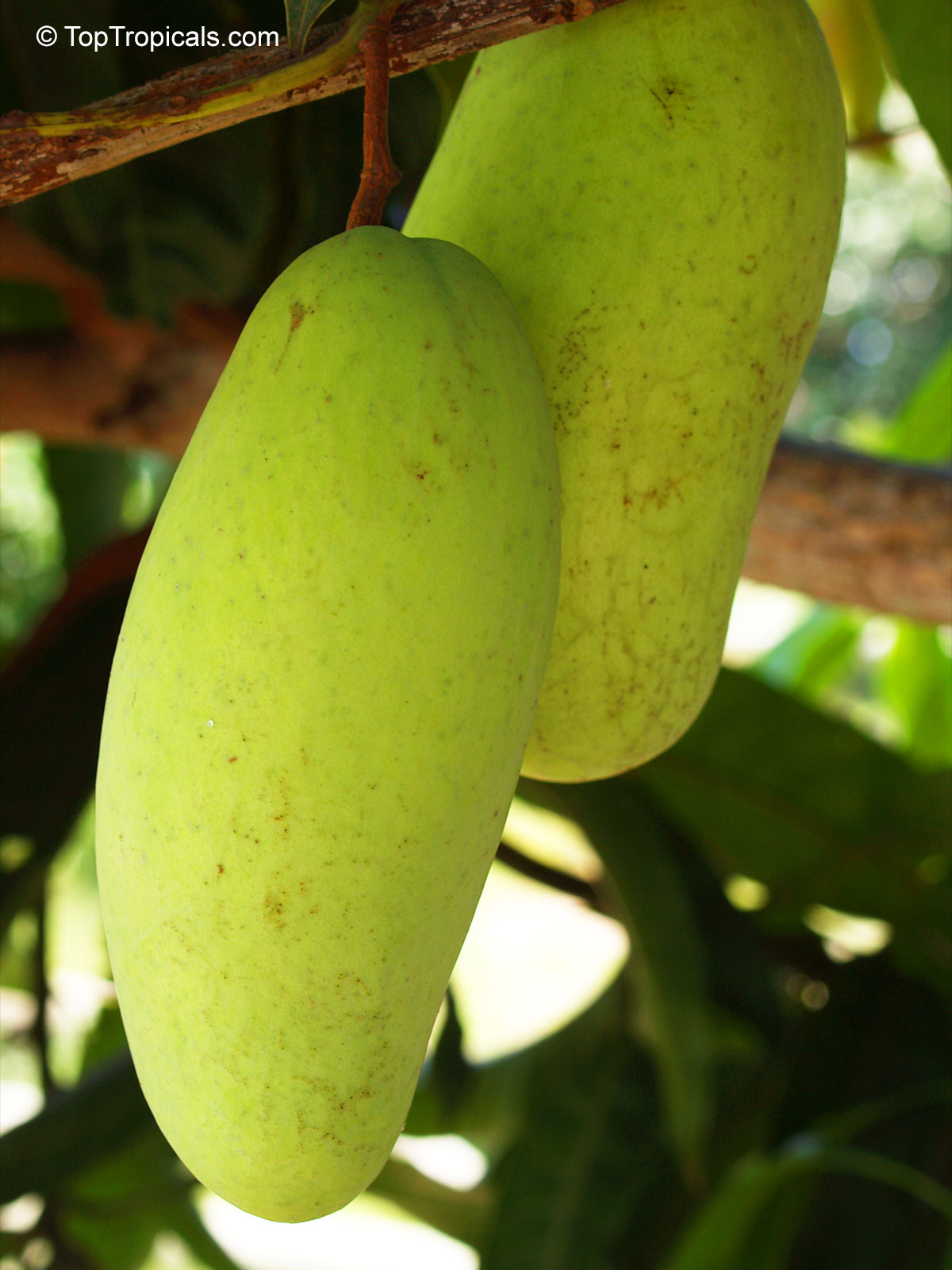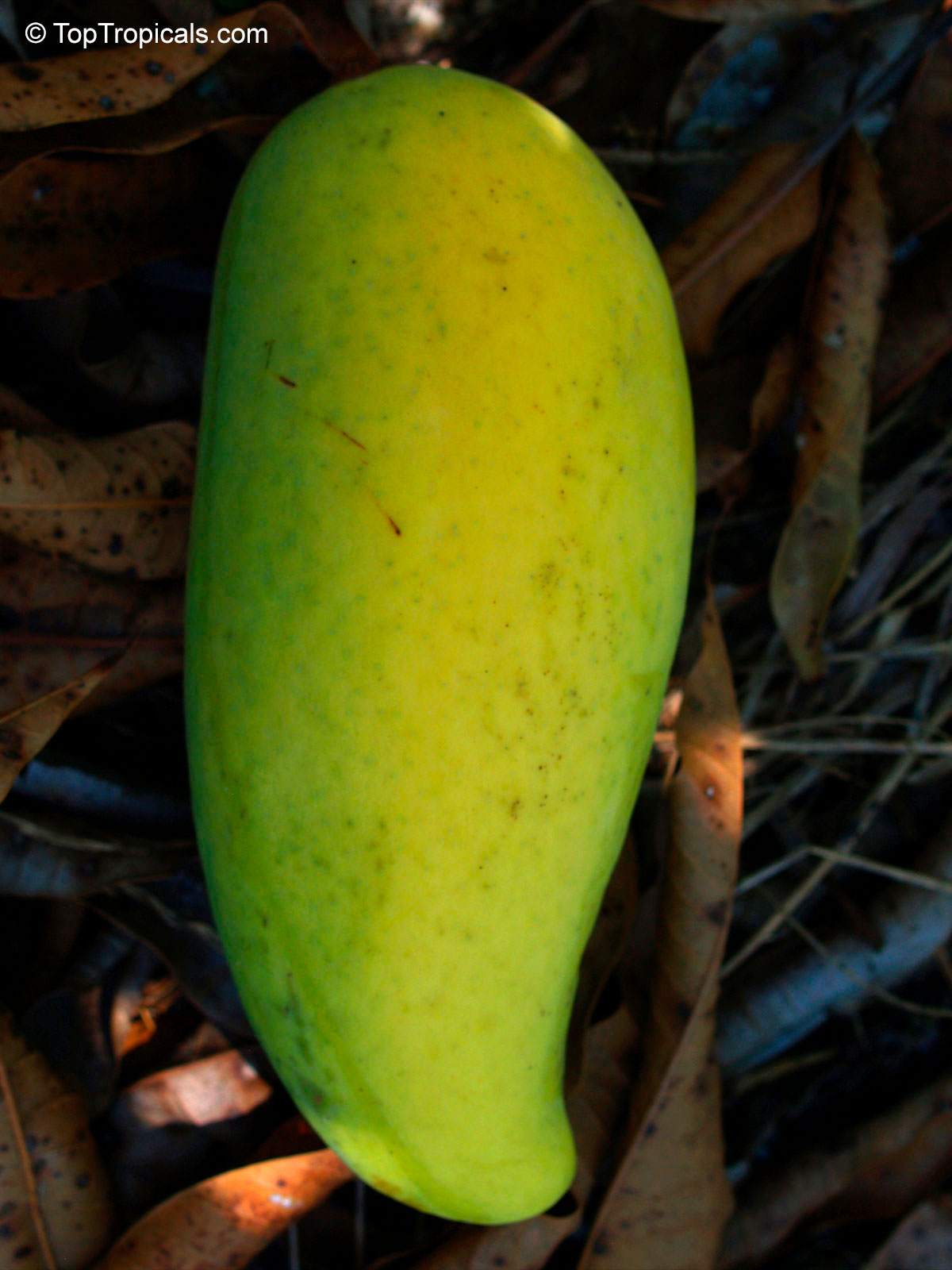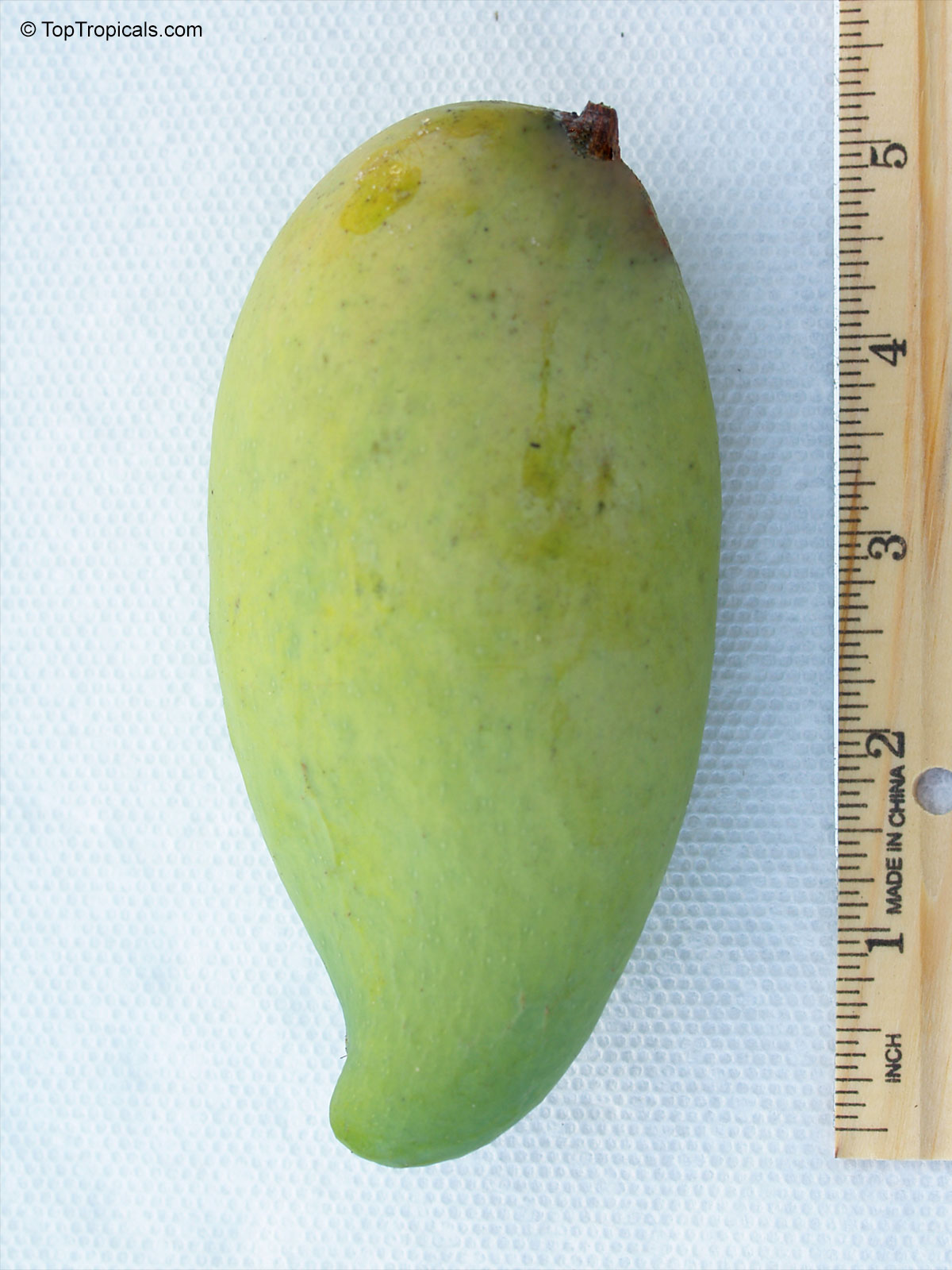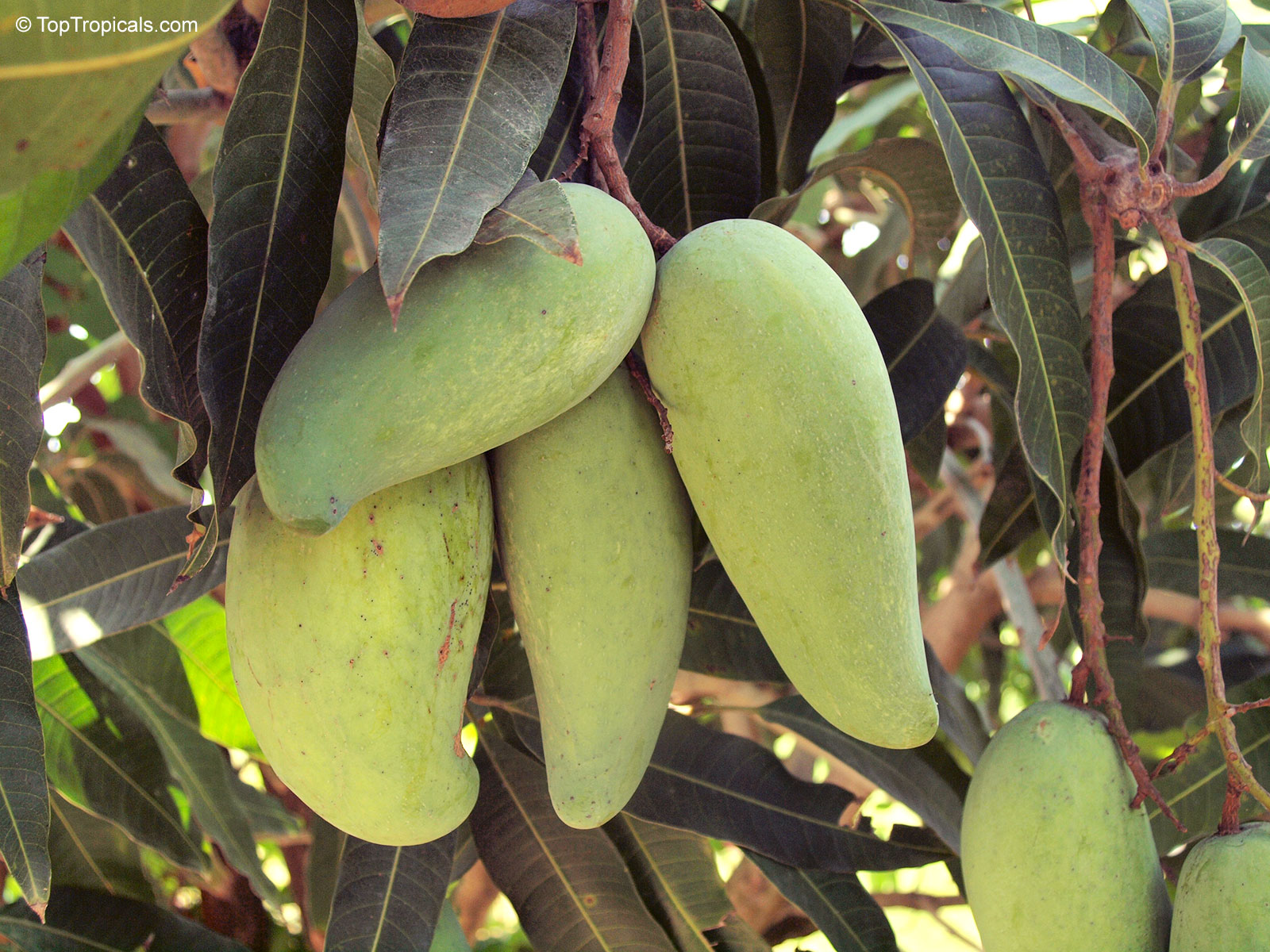Mangifera indica 'Tong Pi Kahn' (Tong Pi Kahn Mango)
Top Tropicals Plant Encyclopedia
Botanical name: Mangifera indica
Common name: Tong Pi Kahn Mango
Cultivar: Tong Pi Kahn
Family: Anacardiaceae
Origin: South Asia and India
Hardiness: 30°F






Mangifera indica (Mango) is a large evergreen tree native to South Asia and among the oldest cultivated fruit trees, grown in India for over 4,000 years. In tropical climates it can reach 60-80 feet with a broad crown of glossy leaves. Small yellowish flowers appear in spring, followed by fleshy drupes known worldwide as mangoes.
Fruit shape varies from oval to kidney-shaped, with skin that may remain green or ripen to yellow, orange, or red. The flesh is juicy and aromatic, sometimes fiberless and sweet, sometimes more resinous depending on type. Mangoes are eaten fresh, dried, blended, or cooked, making them one of the most versatile tropical fruits. Some people experience irritation on the lips from the peel, so fruits are usually eaten peeled.
The tree thrives in full sun and well-drained soil in warm climates, hardy only to USDA Zones 9-11. With hundreds of named cultivars, Mangifera indica remains one of the world s most widely grown and culturally important fruit trees.
See Mango varieties.
Mangifera indica 'Tong Pi Kahn' (Mango, also known as 'Tom Py Kan', 'Pi Kun Thong' or 'Pikun Thong') is a rare Thai variety known for its large, fiberless fruit and pure, rich sweetness. The fruit is elongated and smooth, with green skin that turns clear yellow when fully ripe, usually without any blush. The golden flesh is soft, juicy, and almost completely free of fibers. Its flavor resembles that of Nam Doc Mai, but is less floral and more straightforwardly sweet, producing a clean tropical taste typical of premium Thai dessert mangoes. The tree has moderate vigor, forming an upright, spreading canopy and producing good crops under tropical conditions.
This cultivar thrives in warm, humid climates and performs best in USDA Zones 10-11. It prefers full sun, fertile well-drained soil, and protection from frost. Within Thailand, Pi Kun Tong is regarded as a variety best enjoyed when fully ripe rather than green. The fruits mature in mid to late season, often hanging in clusters and ripening evenly on the tree. With its large size, fiberless texture, and balanced sweetness, Pi Kun Tong stands out as a refined representative of Thai mango breeding.
Related cultivars: Mangifera indica 'Tong Pi Kahn' (Tong Pi Kahn Mango)
- Mangifera indica Alampur Baneshan ''Alampur Baneshan'' (Alampur Baneshan Mango)
- Mangifera indica Alphonso ''Alphonso'' (Alphonso Mango)
- Mangifera indica Baileys Marvel ''Baileys Marvel'' (Baileys Marvel Mango)
- Mangifera indica Beverly ''Beverly'' (Beverly Mango)
- Mangifera indica Bombay ''Bombay'' (Bombay Mango)
- Mangifera indica Cac ''Cac'' (Cac Mango)
- Mangifera indica Carabao ''Carabao'' (Carabao Mango)
- Mangifera indica Carrie ''Carrie'' (Carrie Mango)
- Mangifera indica Choc Anon ''Choc Anon'' (Choc Anon Mango)
- Mangifera indica Coconut Cream ''Coconut Cream'' (Coconut Cream Mango)




